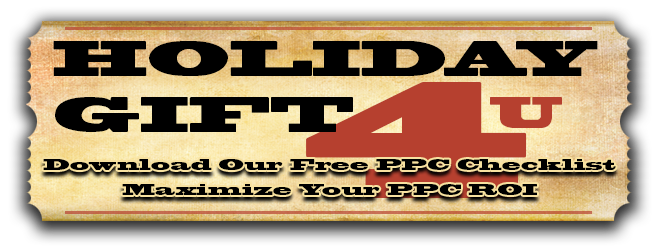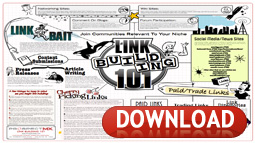About the guest poster: Mike Fleming stays on top of the latest strategies in Paid Search and Web Analytics to make sure every campaign he manages for Pole Position Marketing brings measurable, profit-maximizing value to their company and their website visitors. Mike enjoys playing, writing and recording music along with playing basketball to get his workout in. He resides in Canton, Ohio with a beautiful, sweet, caring and admirable girl who threw a snowball at him one day… then married him.
There are lots of mistakes that one can make when trying to build a PPC account; and as PPC platforms continue to add new and exciting features that make advertising better, it can also tend to complicate things for those that don’t have the time or energy to continuously monitor changes to these systems. A couple examples include the recent AdWords changes to ad rotation settings and keyword matching options. If you manage your own PPC account and haven’t heard about these yet, I suggest you check it out. Yes, Google (cough) changes your account without you opting in to the changes (gasp). This causes you to make some mistakes just because of ignorance.
But there’s one mistake that you can make with your PPC campaigns that has been around since the beginning. It applies not only to PPC, but to all marketing online. For this post, I’ll focus on its application with PPC.
Maintaining Customer Scent
 I continuously get chances to look at the PPC accounts of various companies and most of them fail to build scent trails that match what users are hunting for with the solutions they provide that will satisfy their hunger. They either end up showing ads to users that don’t match the search intent that caused the searcher to type their specific query into the search engine (causing the searcher to not even pick up the scent of their solution), or they fail to keep the scent once the user goes to interact with their website.
I continuously get chances to look at the PPC accounts of various companies and most of them fail to build scent trails that match what users are hunting for with the solutions they provide that will satisfy their hunger. They either end up showing ads to users that don’t match the search intent that caused the searcher to type their specific query into the search engine (causing the searcher to not even pick up the scent of their solution), or they fail to keep the scent once the user goes to interact with their website.
Since the Internet gives ultimate control in the buying process to the customer, businesses must learn to deliver the type of information searchers need to be motivated to keep going, to not get frustrated and to not return to the scent trail’s starting point to find another path to go down (meaning your competitor’s).
With PPC, this all starts with specific ads and how the account manager controls the search queries that each of their ads are shown for (what we call “account organization”). It’s very common for business owners and marketing executives to try and manage their accounts themselves, and for those that do, this is one of the big mistakes that is commonly seen.
Why You Might Have Trouble Providing Scent
Two reasons I can think of for this are
- They bring an offline advertising mindset to online advertising and
- They simply don’t know how to optimally use the organizational tools given by PPC platforms (campaigns, ad groups, keyword match types, etc.) to control the serving of their ads.
With regards to the first one…in the online world, the web user has total control. They simply click their mouse to go wherever they want to go as fast as they want to go there. If they are not interested in what they’re consuming, they simply go somewhere else. So, if you’re spending your time, energy and money on trying to attract these customers to you instead of your competitors, it serves you much better to simply give them what they’re looking for instead of trying to use fancy tricks to grab attention and be memorable.
When someone does a search, you’ve already got their attention. They’re already looking for what you have to offer. Your goal should simply be to develop the scent trail that is the most satisfying to the searchers’ needs and desires.
Control What You Can Control
But, just because the buyer has total control, doesn’t mean you’re totally out of control. With regards to #2, a PPC campaign manager is given the opportunity to decide how much control they have over the serving of their ads with different organizational tools provided by the PPC platforms. What do I mean by this? Let me give you an example with one of these tools – keyword match types.
I frequently see many people that manage their PPC accounts by entering keywords into their chosen PPC platform in an ad group inside of a campaign. That seems standard, right? The problem? They have no regard for keyword match types! In fact, many of them don’t even know what keyword match types are! (If you’re reading this and you don’t, please don’t manage your own account. You’re wasting money.)
Why is this problem? Let’s say you’re selling business cards. You craft a nice little ad about your big sale on business cards and what an awesome company you are to work with. You add the keyword business cards to an ad group and let it run. Since you don’t know what keyword match types are, by default Google lets you enter the keyword as a broad match keyword (because they have no problem accepting wasted money). Well, you sell the standard paper business cards. The problem is that you’ve given Google the freedom to show your ad on ANY search query THEY deem to be relevant to your keyword. You can be quite sure that this will include queries like clear business cards, plastic business cards and gift cards for my business. Well, you don’t sell any of these. So, you’ve failed to even start a correct scent trail because you’re trying to lure the wrong customers.
But, this is just one way of many in which you can incorrectly structure scent trails to match user intent and satisfy their needs and desires. If you want to master online marketing, maintaining scent from first interaction to checkout and beyond for your target audience in the places they are found online is a critical component. In the realm of PPC advertising, you’ve got to learn and correctly apply the tools that are provided for you to help pull this off, or you’ll continue to cost yourself money.




